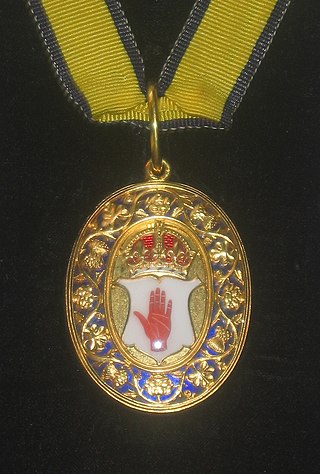
A baronet or the female equivalent, a baronetess, is the holder of a baronetcy, a hereditary title awarded by the British Crown. The title of baronet is mentioned as early as the 14th century; however, in its current usage it was created by James I of England in 1611 as a means of raising funds for the crown.

Baron Kilmaine is a title that has been created twice, both times in the Peerage of Ireland. The first creation came in 1722 in favour of the soldier the Hon. James O'Hara. Two years later he succeeded his father as Baron Tyrawley. However, both titles became extinct on the second Baron Tyrawley's death in 1773 without legitimate sons.

The Dalyell Baronetcy in the Baronetage of Nova Scotia was created 7 November 1685 for a Scottish General, Thomas Dalyell of the Binns. The succession of the title is unusual in that, in default of heirs male, it can pass by special remainder to tailzie succeeding him in the estate of The Binns.
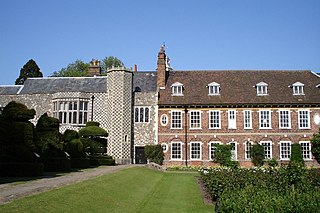
There have been two Baronetcies created for persons with the surname Austen, one in the Baronetage of England and one in the Baronetage of Great Britain. Both creations are extinct.
Three baronetcies were created for persons with the surname D'Oyly, two in the Baronetage of England and one in the Baronetage of the United Kingdom. One creation is extant as of 2008.

The Hoghton or Houghton, later Bold-Hoghton, later de Hoghton Baronetcy, of Hoghton Tower in the County of Lancashire, is a title in the Baronetage of England. It was created on 22 May 1611 for Richard Hoghton, Member of Parliament for Lancashire. The Hoghton family had been landowners in Lancashire since the reign of King Stephen and had been Knights of the Shire for Lancashire since the 14th century. The second Baronet represented Clitheroe and Lancashire in the House of Commons and was a Royalist leader during the Civil War. The third and fourth Baronets both sat as Members of Parliament for Lancashire. The fifth Baronet was Member of Parliament for Preston and East Looe while the sixth and seventh Baronets represented Preston. The eighth Baronet assumed the additional surname of Bold. In 1892 the ninth Baronet resumed, by Royal licence, the ancient family surname of de Hoghton.
There have been four baronetcies created for members of the Thorold family of Lincolnshire, two in the Baronetage of England and two in the Baronetage of Great Britain. As of 2014 one creation is extant.
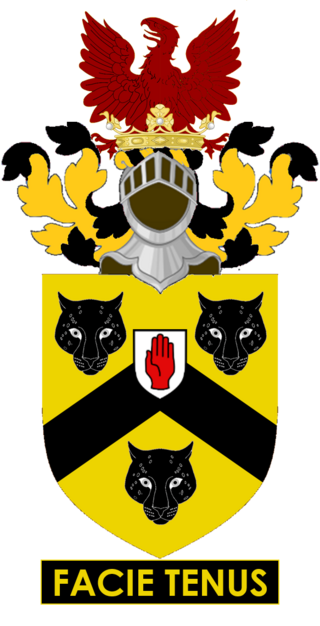
There have been two baronetcies created for persons with the surname Wheler, one in the Baronetage of England and one in the Baronetage of the United Kingdom. One creation is extant as of 2008.

The Grierson Baronetcy, of Lag in the County of Dumfries, is a dormant title in the Baronetage of Nova Scotia. It was created on 25 March 1685 for Robert Grierson, Member of the Scottish Parliament for Dumfries and notorious persecutor of the Covenanters, with remainder to heirs male whatsoever. The baronets owned Lag Castle and Rockhall Tower.
There have been four baronetcies created for persons with the surname Hay, all in the Baronetage of Nova Scotia. Two creations are extinct, one dormant and one extant. A fifth baronetcy in the Jacobite Peerage, although theoretically extant, is not recognised by the Lyon Office.
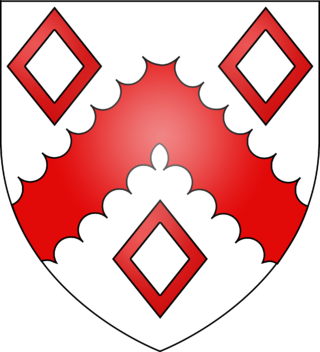
The Spring Baronetcy, of Pakenham in the County of Suffolk, is a title in the Baronetage of England.

The Whitefoord Baronetcy, of Blairquhan in the County of Ayr, was a title in the Baronetage of Nova Scotia. It was created on 30 December 1701 for Adam Whitefoord. According to Cokayne, the title became dormant on the death of the third Baronet in 1803. Absent from the Official Roll of the Baronetage, the title is now extinct.
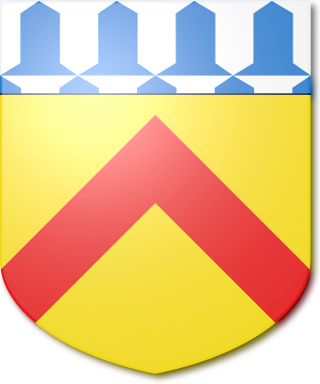
The St Quintin Baronetcy, of Harpham in the County of York, was a title in the baronetage of England. It was created on 8 March 1642 for William St Quintin. The third Baronet sat as Member of Parliament for Kingston upon Hull. The fourth Baronet was Member of Parliament for Thirsk. The title became extinct on the death of the fifth Baronet in 1795. The family estate of Scampston Hall was passed on to the late Baronet's nephew, William Thomas Darby, the son of Vice-Admiral George Darby, who assumed the surname and arms of St Quintin.
The Scott Baronetcy, of Kew Green in the County of Middlesex, was created in the Baronetage of England on 9 August 1653 for William Scott. The title became either extinct or dormant on the death of the fourth Baronet c. 1775.
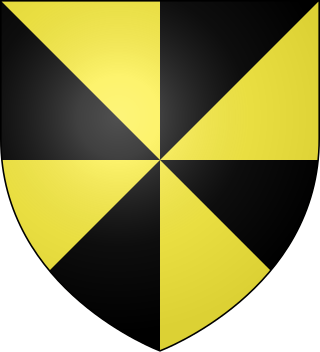
The Campbell baronetcy, of Lundy in the County of Forfar, was created in the Baronetage of Nova Scotia on 13 December 1627 for Colin Campbell. He was the son of Colin Campbell of Lundie, younger son of Colin Campbell, 6th Earl of Argyll. The title became dormant on the death of the second Baronet in c. 1696. The title is later believed to have been vested in Archibald Campbell, 1st Duke of Argyll, and his descendants: Cockayne makes this a tentative suggestion.
The Livingstonbaronetcy, of Glentirran in the County of Stirling, was created in the Baronetage of Nova Scotia] on 20 July 1685 for Alexander Livingston.

The Graham baronetcy, of Esk (Eske) in the County of Cumberland, was created in the Baronetage of England on 29 March 1629 for Richard Graham (c.1583–1654). He represented Carlisle in Parliament, was a Gentleman of the Horse to King Charles I and fought at the Battle of Edgehill in 1642.

The Gordon baronetcy of Gordonstoun was created on 28 May 1625 in the Baronetage of Nova Scotia for Robert Gordon of Gordonstoun, fourth son of Alexander Gordon, 12th Earl of Sutherland. It was until 1908 the premier baronetcy in Scotland.

The Gordon baronetcy of Lesmore, Aberdeenshire was created on 2 September 1625 in the Baronetage of Nova Scotia for James Gordon, son of Alexander Gordon.
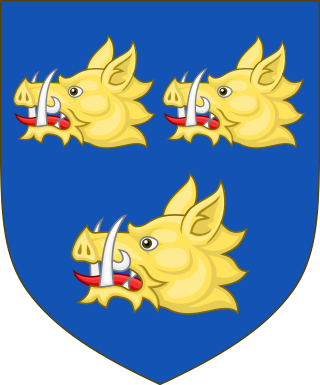
The Gordon baronetcy of Embo, Sutherland, was created on 18 June 1631 for John Gordon, son of John Gordon a prominent landowner.















